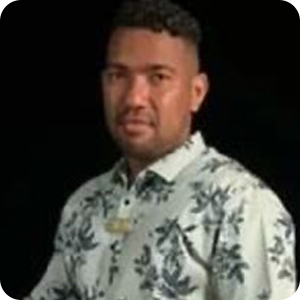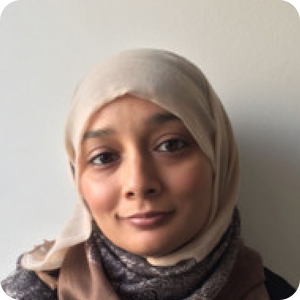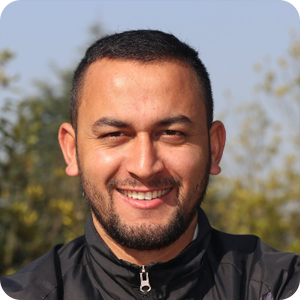Ensuring sexual and reproductive health and rights (SRHR) of every boy and girl is vital to ensure that individuals can make informed decisions and choices about their lives. Once in place and functional, SRHR results in improved health outcomes, enhanced gender equality, and poverty reduction. On the other hand, if governments globally fail to ensure SRHR, the consequences include high maternal mortality rates, a spread of sexually transmitted infections, and gender-based violence, among others. Today, according to United Nations Population Fund (UNFPA) findings, progress in sexual and reproductive rights is slowing or stagnating. We asked developmentaid.org experts about how proper access to SRHR could be a development catalyst from a gender perspective. Check out some opinions below.
Key Takeaways:
- According to the latest UNFPA report, globally, the most frequent references to aspects of SRHR are maternal and newborn health and gender-based violence.
- UNICEF states that worldwide, only 1 in 2 adolescent girls and young women aged 15-19 have their demands for family planning satisfied by modern methods. In most countries with available data, few adolescent girls make decisions about their own sexual and reproductive health.
- Access to SRHR services empowers women by providing them with essential information about contraception, family planning, and sexual health, enabling them to make informed decisions about their reproductive health and lives.
- SRHR education promotes healthy behaviors which leads to reduced maternal and infant mortality rates, better overall health outcomes, and a more productive workforce.
DevelopmentAid: How does access to comprehensive SRHR services contribute to gender equality and women’s empowerment?

“Access to comprehensive SRHR services plays a crucial role in promoting gender equality and empowering women in various ways. When women have access to these services, they can make informed decisions about their reproductive health, which leads to several positive outcomes:
- Empowerment through education: Comprehensive SRHR services provide information on contraception, family planning, and sexual health. When women can access this information, they can make informed choices about their bodies and reproductive health, empowering them to take control of their lives.
- Health and well-being: Access to SRHR services ensures that women can receive necessary healthcare, such as pre-natal care, safe childbirth services, and screening for reproductive health issues. This leads to better health outcomes for women, reducing maternal mortality rates and improving overall well-being.
- Economic empowerment: By being able to plan their pregnancies and space their children, women can pursue education, enter the workforce, and advance their careers. This economic empowerment contributes to gender equality by narrowing the gender wage gap and increasing financial independence.
- Reducing gender disparities: Comprehensive SRHR services also address issues such as gender-based violence, early marriage, and female genital mutilation. By tackling these harmful practices and providing support to survivors, SRHR services contribute to reducing gender disparities and promoting gender equality.
- Agency and autonomy: Access to SRHR services gives women the agency to make decisions about their bodies, sexuality, and reproductive choices. This autonomy is essential for women’s empowerment as it allows them to lead fulfilling lives on their terms.
In conclusion, comprehensive SRHR services are essential to advance gender equality and empower women by providing them with the knowledge, resources, and support needed to make informed decisions about their reproductive health and overall well-being.”

“From my research experience, access to sexual and reproductive health (SRH) services goes far beyond health; it’s about securing the autonomy and dignity of women, especially those from marginalized groups like women with disabilities in Uganda. In my research, I’ve seen how abortion and reproductive health are often wielded as tools to restrict women’s autonomy, especially those with intersecting identities—disability, gender, ethnicity, and socio-economic background—which all play a role in determining access to SRH services. My work in Uganda reveals that SRH is foundational to women’s empowerment. True SRH access means more than healthcare—it means women can make informed choices about their bodies, futures, and opportunities. For instance, access to SRH services allows women to plan their families, pursue education, and build financial independence, directly influencing their capacity to make decisions that align with their personal needs and aspirations. The impact of SRH access, then, is transformative. It builds pathways for women to assert their rights and participate fully in society. With each gain in SRH services, women gain greater control over their reproductive health, which is essential for meaningful gender equality and a future where they can truly thrive.”

“SRHR is an integral component of gender equality and women’s empowerment. When individuals, especially women and girls, do not have control over their bodies, they are unable to fully participate in the social, economic and political spheres of society. Tools and services such as comprehensive sexuality education contributes to gender equality by sharing information about the centrality and diversity of gender in people’s lives; it encourages people to challenge and re-evaluate gendered norms imposed on them and consider how they contribute to gender inequality; it encourages conversations about gendered roles; it encourages girls, women, and gender-diverse people to take agency over their bodies and exercise autonomy; and it inspires. Furthermore, it prevents the possibility to promote the formation of views and opinions that oppose gender-based violence. Additionally, access to other services such as abortion, contraception and other services enables women and girls to enjoy their reproductive rights and plan their lives.”

“SRHR is a key component of healthcare and health is a basic human right. Its provision is critical to reducing global maternal mortality (globally everyday almost 800 women die from preventable causes related to pregnancy and childbirth) and expanding women’s ability to decide and choose what happens to their bodies from decisions such as whether to have children, how many children to have and when to have them. Decisions on SRHR have direct impacts on women’s educational attainment (many teenagers drop out of school during pregnancy) and opportunities for employment (balancing work and childcare with the burden of childcare disproportionately falling on women) and therefore their ability to earn an income/livelihood and raise their children in an environment free that is from poverty.”

“Many people think that improving comprehensive SRHR services is not a basic need, that women and girls in emergency or conflict situations need food, water, housing and security and that comprehensive SRHR services are for later; like a luxury. However, access to comprehensive SRHR services is both a basic need and in the interest of women and girls, in general as well as in emergency situations. It helps to prevent child marriage, it helps to avert early and risky pregnancies. It supports delaying pregnancies and marriage and reducing the number of children, which creates more time for women and girls – for instance for education, political participation or economic activities – and contributes to better health. Comprehensive SRHR services generally take into account the existing gender inequalities and address these. To start with, (young) women should be allowed to speak and obtain appropriate information about their SRH rights. When done well, this includes raising awareness among men/boys and their responsibilities. This helps women to make informed decisions about their (own!) sexual and reproductive life. It avoids girls (and boys!) having to learn about sex through dangerous sources, such as websites for adults, provides access to contraceptives and contributes to allowing women and girls to say “no” when they do not want to have sex. In many countries, the patriarchal anti-gender narrative is nevertheless increasing which happens in both the Global North and South. When comprehensive SRHR services address and are combined with transformative norms and behavioral change for gender justice and gender equality, these services have both lots of positive impact on poverty reduction and the agency of women and girls.”

“Comprehensive SRHR encompasses giving decision-making authority to women about their bodies and the rights associated with this. Comprehensive SRHR also helps to reduce gender-based violence through psychosocial counseling services, peer-to-peer support mechanisms, safe abortion services and so on. This may ultimately contribute to gender equality and women’s empowerment. Likewise, the knowledge transition of SRHR from one generation to another also helps to establish remarkable connections from the perspective of comprehensive SRHR. The children of empowered women are likely to have good health and be well informed about comprehensive SRHR.”

“Access to quality comprehensive SRHR services without discrimination is a prerequisite to gender equality and women’s empowerment. SRHR services are broad but I find access to quality contraceptives to be of interest as this largely influences the life trajectory of a woman. In many societies, women face barriers such as those related to access to contraceptives which curtails their power to decide if they want to have children, when they want to have children, with whom they want to have children and how many. In most cases, women are the primary caregivers to children and are consequently forced to give up their careers or are systematically disadvantaged from taking up higher, better-paying roles due to multiple responsibilities at home and work. Body autonomy gives power to women to make decisions about their bodies including delayed childbirth as they pursue education, find gainful employment or businesses and generally contribute to their own well-being and the social, economic and political development of a society. Evidence related to intimate partner violence suggests that women with sources of income have the power to easily make decisions to leave abusive relationships compared to those with minimal or no source of income. It is imperative to remove systemic barriers such as norms, laws and policies that perpetuate injustices related to accessing comprehensive SRHR services.”

“Access to comprehensive SRHR services can empower women in the way that it supports them to make informed decisions about their own bodies and health. As an example, many women in Indonesia are told that they bear the sole responsibility for birth control and that their husbands should not be encouraged for vasectomy. Cultural factors and social norms typically depict vasectomy as an option only for couples who are certain they do not want more children, often viewing it as a measure of last resort. According to a Statistics Indonesia 2023 report, vasectomy is often not the preferred option for many potential male recipients. It has therefore been challenging for women to manage healthier pregnancy intervals and maintain themselves in the workforce or in the pursuit of a tertiary degree. Based on the most recent estimates, the unemployment rate of women stands at approximately 5.8% of the female labor force, while the unemployment rate for men in Indonesia is approximately 4.82%.”
DevelopmentAid: In what ways does the availability of SRHR education impact population growth and sustainable development?

“Access to comprehensive SRHR education plays a significant role in influencing population growth and sustainable development in various ways:
- Population growth management: When individuals have access to SRHR education, they are more likely to make informed decisions about family planning, contraception, and reproductive health. This leads to a reduction in unintended pregnancies and helps in managing population growth by enabling individuals to plan the size of their families according to their resources and aspirations.
- Healthier population: SRHR education promotes healthy behaviors, such as seeking pre-natal care, preventing sexually transmitted infections, and accessing reproductive health services. A healthier population results in reduced maternal and infant mortality rates, improved overall health outcomes, and a more productive workforce which contribute to sustainable development.
- Empowerment of women: SRHR education empowers women by providing them with knowledge about their bodies, reproductive rights, and contraceptive options. Empowered women are more likely to delay childbirth, pursue education and career opportunities, and participate actively in society. This empowerment leads to smaller family sizes, higher levels of education, and increased economic productivity, all of which are essential for sustainable development.
- Environmental sustainability: By promoting responsible reproductive choices and family planning, SRHR education can help in achieving environmental sustainability. A smaller population size, coupled with informed decisions about resource consumption, can reduce the strain on natural resources and contribute to environmental conservation efforts.
- Economic development: Access to SRHR education can lead to economic development by enabling individuals to plan their families, invest in education and skills development, and participate in the workforce. A well-educated and healthy population can drive economic growth, create employment opportunities, and foster innovation, all of which are crucial for sustainable development.
In summary, the availability of SRHR education is essential for managing population growth, promoting sustainable development, empowering women, improving health outcomes, and contributing to environmental sustainability. It plays a vital role in shaping healthier, more equitable, and prosperous societies for the future.”

“Comprehensive sexuality education plays a crucial role in influencing decisions about family planning and reproductive health, ultimately impacting population growth and sustainable development. By providing individuals with accurate information about contraception, family planning methods, and reproductive health, SRHR education empowers them to make informed decisions about whether and when to have children. This can lead to a reduction in unplanned pregnancies and subsequently slower population growth rates. Moreover, when individuals have the knowledge and resources to plan their families, they are better positioned to pursue educational and economic opportunities. This, in turn, can contribute to sustainable development by promoting healthier and more prosperous communities.”

“Providing comprehensive sexuality education (CSE) in and out of school fosters personal development while also benefiting the community and society, which ultimately promotes and contributes to sustainable development. CSE provides young people with the tools to navigate their sexuality, make decisions about their life and foster safe sexual conduct, and it also improves general health and reduces inequality, all of which advance SDGs 4 and 5. Engaging with communities as part of CSE is critical; it is most effective when school-based programs are supplemented by community-based out-of-school projects. Additionally, it has been demonstrated to lower HIV and other sexually transmitted illnesses, gender-based violence, and teen pregnancies, all of which support SDGs 3 and 10.”

“Comprehensive sexuality education is essential in schools to teach young people about SRHR to enable them to make informed decisions including consent. This must be combined with community awareness with gatekeepers such as parents, teachers and community leaders including religious leaders. There are lots of myths about SRHR and contraceptive use, much of which is not evidence-based. For example, there is no evidence to suggest that teaching young people about SRHR increases or encourages sexual activity. There are also myths about different types of contraceptives and their impact on fertility. SRHR education must be considered through a gender lens, often discussions around SRHR are centered around harmful gender and social norms aimed at limiting women’s sexuality and encouraging young men to “prove” their masculinity. The provision of SRHR services has considerable economic benefits for a country as a whole, not only does it lead to more people in the workforce and reducing population growth, but also in terms of the millions/billions of healthcare costs saved through the number of maternal deaths being averted, unintended pregnancies being averted, and unsafe abortions being averted. We have also seen more recently the correlation between SRHR, population growth and climate change and this aspect should be considered as part of any SRHR education program in addition to women’s rights-based arguments.”

“The availability of SRHR education impacts population growth and sustainable development in various ways.
- Agency, decision-making, and economic empowerment. Comprehensive SRHR services allow women and girls to control their reproductive choices. Such agency bestows upon them the power to choose the number, timing, and spacing of children. Therefore, this supports the pursuit of better education, equitable workforce participation, and economic contribution to families, and social development. This is essential to bridge gender gaps and foster equality.
- Health and well-being. SRHR services include access to contraception, safe abortion, maternal health care, and treatment for sexually transmitted infections. These services are critical to ensure women’s physical and mental health. Improved health outcomes lead to increased participation in social, economic, and political spheres, thereby fostering gender equality.
- Educational opportunities. Access to SRHR services significantly reduces school dropout rates among girls, which often occurs due to early pregnancies, child marriage, female genital mutilation, or menstrual health issues. SRHR information and services guarantee the completion of education for such girls, leading to better career prospects and financial independence.
- Mitigating gender-based violence. Comprehensive SRHR services often include education and resources to prevent and respond to gender-based violence (GBV). By providing support and information, these mitigate the prevalence of GBV which is a significant barrier to gender equality. Women with access to SRHR services are more likely to seek help and report violence, contributing to their safety and empowerment.
- Legal and social rights. Access to SRHR upholds women’s legal and social rights. It involves advocating for policies and laws that protect women’s health and rights, challenging discriminatory practices, and promoting gender-sensitive approaches in healthcare. This legal framework supports gender equality by recognizing and enforcing women’s rights to health and autonomy. Legally empowered women are more likely to participate in community decision-making and leadership roles, driving social change toward more equitable societies.”

“The availability of SRHR education may bring down fertility rates by promoting family planning which in turn helps to control the increase in population. Women’s empowerment and gender equality can also improve economic participation and work to eliminate poverty. People who have been educated make better decisions about the interpregnancy interval, stay in school longer and contribute to the economy in a more efficient way. In addition, population growth through SRHR education supports sustainable resource utilization and action on sustainability by long-term ecological balance, providing all people with the resources needed to live a prosperous life in an equitable way.”

“Access to factual and timely SRHR education contributes to the agency of an individual. Agency entails the confidence to act and fulfill one’s SRHR needs as a result of prior knowledge. SRHR education is especially crucial for young people and more so girls, as it delays early sexual debut and promotes knowledge about protective sex. SRHR education contributes to the prevention of unintended pregnancies, girls dropping out of school, child marriages, sexually transmitted diseases, sexual and gender-based violence and generally the vicious cycle of poverty. SRHR contributes to knowledge about how and where to access services such as contraceptives that have an impact on population growth and sustainable development. Economies that have a lower population, effective leadership and resources that can sustain their population thrive better than those with higher populations.”

“Availability of SRHR education enables informed family planning and may reduce incidence of adolescent pregnancies that would further reduces healthcare costs and enhance economic productivity, among others. A study on adolescents’ perceptions of reproductive and mental health by Indonesian National Children’s Forum (FAN) and the Children & Youth Advisory Network (CYAN)-led group of Indonesian young researchers in 2023 reported that adolescents are at risk of reproductive health and mental health issues, yet their knowledge and experience in these areas remain very limited. The reproductive and mental health information accessed by teenagers through digital media has not been inclusive and lacks professional guidance. Furthermore, many adolescents are unaware of, cannot access, and are not involved in Indonesia’s Adolescent Health Care Services (PKPR) program. Adolescents in Indonesia have thus become increasingly vulnerable to sexually transmitted diseases (STDs), HIV, sexual violence, and unwanted teenage pregnancies. The situation regarding sexually transmitted diseases (STDs) in Indonesia has shown notable trends over the years 2022 and 2023. There has been a significant rise in syphilis cases, with an increase of almost 70% over the last five years, as reported by Indonesia’s Ministry of Health in 2023. This increase not only affects adults but has also been noted among children and the elderly. Indonesia now has Sexual and Reproductive Health Content Creators Community of Practice, a group of 70 (and counting!) community and individual content creators, committed to make SRHR education available for everybody, especially adolescents and youth.”
DevelopmentAid: How does the intersection of SRHR and HIV/AIDS affect communities and public health initiatives?

“The intersection of SRHR with HIV/AIDS has significant implications for communities and public health initiatives:
- Community health impact: When SRHR and HIV/AIDS intersect, this can have a profound impact on community health. Comprehensive SRHR education and services are essential in preventing the transmission of HIV/AIDS by promoting safe sex practices, access to HIV testing, and awareness of the importance of regular screenings. Additionally, addressing issues related to stigma and discrimination within the community is crucial for supporting individuals living with HIV/AIDS and ensuring they receive proper care and support.
- Public health initiatives: The integration of SRHR and HIV/AIDS in public health initiatives can lead to more effective and holistic approaches to addressing both issues. By combining efforts to promote sexual health, prevent HIV transmission, and providing access to treatment and care, public health programs can better meet the needs of communities. This integration can also help to reduce the spread of HIV/AIDS, improve health outcomes, and promote overall well-being.
- Empowerment and advocacy: The intersection of SRHR and HIV/AIDS presents opportunities for empowerment and advocacy within communities. By promoting comprehensive sexual education, advocating for the rights of individuals living with HIV/AIDS, and addressing the social determinants of health, communities can work towards reducing stigma, increasing access to services, and promoting positive health outcomes for all individuals.
- Prevention strategies: Integrating SRHR and HIV/AIDS prevention strategies can be more effective in reaching at-risk populations and addressing underlying factors that contribute to the spread of HIV/AIDS. By promoting condom use, regular testing, early diagnosis, and treatment adherence, public health initiatives can reduce new infections and improve the quality of life for those affected by HIV/AIDS. Overall, the intersection of SRHR and HIV/AIDS underscores the importance of a comprehensive and inclusive approach to promoting sexual health, preventing HIV transmission, and supporting individuals and communities affected by HIV/AIDS. By addressing these issues collectively, communities and public health initiatives can work towards improving health outcomes and promoting the well-being of all individuals.”

“The continuous decline and/or failure to protect SRHR and the consistent growth of HIV transmissions put strain on healthcare systems and require resources that could be used to address other healthcare and community development issues. Poor SRHR and HIV negatively affects personal well being and that of the community at large.”

“The intersection of SRHR and HIV/AIDS has profound implications for communities and public health initiatives, particularly in the Global South. In diverse communities shaped by various identities, access to sexual and reproductive health (SRH) products can be influenced by social hierarchies, indirectly affecting vulnerability to HIV/AIDS. For instance, in my research in Uganda, I observed that women with disabilities are often perceived as asexual, leading to misconceptions and stigma. This stigma can result in restrictions on their access to contraceptives and other SRH services at public health centers. As a consequence, women with disabilities may face increased vulnerability to HIV/AIDS due to limited access to prevention methods. This highlights the importance of addressing intersecting factors such as gender, disability, and social norms in HIV/AIDS prevention and SRHR initiatives. Efforts to promote inclusive and accessible SRH services are essential to ensure that all individuals, regardless of their identities, have equal access to HIV/AIDS prevention and care. By addressing these intersecting issues, public health initiatives can better support communities in reducing the prevalence of HIV/AIDS and promoting overall health and well-being.”

“The connection between SRHR and HIV/AIDs is widely recognized. However, much more work needs to be done globally to ensure integrated service provision is embedded into national policies, strategies, and practices. Work on the intersection between SRHR and HIV/AIDs has often focused on the elimination of mother-to-child transmission of HIV but not SRHR more broadly which is a missed opportunity. The intersection between SRHR and HIV/AIDs is important particularly when discussing the dual role of condoms. There is greater acceptability of the use of condoms as a method for protecting against HIV/AIDs even in conservative communities. Talking about HIV/AIDs can be an “in” to talking about other contraceptive methods/ other STIs and SRHR rights more broadly.”

“Drivers such as poverty, gender inequality, social marginalization and discrimination of disadvantaged populations are linked to HIV/AIDS and poor access to SRHR. In some cases, HIV-positive women experience stigma and discrimination in accessing contraceptives thus shying away from obtaining these which in turn leads to unintended pregnancies and unsafe abortions. It is crucial to pay attention to the interaction between hormonal contraceptives and antiretroviral therapy to determine the best contraceptives for HIV-positive women. It is therefore important to design inclusive SRHR community and public health initiatives that recognize the barriers faced by HIV-positive people.”

“Sexually transmitted infections, which HIV is part of, are a universal component of SRHR education. SRHR education is ideally tailored to effectively teach individuals how to prevent HIV transmission so that public health initiatives aimed at reducing the spread of HIV and other STIs more effective. HIV cases in Indonesia remain relatively high. It is estimated that there are about 515,455 people living with HIV, yet only 452,723 individuals have been diagnosed or are aware of their HIV status. In a November 2023 press conference, a representative of Indonesia’s Ministry of Health has emphasized the need for early sexual and reproductive health education for adolescents due to the significant number of HIV cases among this group. They identified that cases are appearing in younger individuals, including a case of a 12-year-old in Central Java who was not infected as a baby but diagnosed at 12. This underscores the necessity for intensified efforts targeting younger adolescents.”
DevelopmentAid: What are the connections between SRHR and poverty reduction efforts, particularly in developing countries?

“The connections between SRHR and poverty reduction efforts, especially in developing countries, are crucial and intertwined:
- Health and economic impact: Improving SRHR in developing countries can have a significant impact on poverty reduction. Access to comprehensive SRHR services, including family planning, maternal health care, and HIV/AIDS prevention, can lead to better health outcomes for individuals. When individuals have control over their reproductive health, they can make informed decisions about family size, education, and employment, which can ultimately contribute to breaking the cycle of poverty.
- Empowerment and education: SRHR plays a key role in empowering individuals, especially women and girls, in developing countries. When women have access to SRHR services and education, they are more likely to stay in school, delay marriage and childbearing, and pursue economic opportunities. This empowerment can lead to increased productivity, higher income levels, and overall economic growth within communities.
- Population dynamics: Addressing SRHR in poverty reduction efforts is essential to manage population dynamics in developing countries. By providing access to family planning services and education, communities can better plan for sustainable development, reduce dependency ratios, and allocate resources more efficiently. This can lead to improved living standards, increased economic stability, and reduced poverty levels over time.
- Policy and investment: Integrating SRHR into poverty reduction strategies requires policy support and investment in health systems. Governments and development partners need to prioritize SRHR initiatives, ensure access to essential services, and support comprehensive sexuality education. By investing in SRHR, countries can promote economic growth, gender equality, and social development, which are essential components of poverty reduction efforts. In conclusion, the connections between SRHR and poverty reduction efforts in developing countries are multifaceted and essential for promoting sustainable development and improving the well-being of individuals and communities. By addressing SRHR issues within poverty reduction strategies, countries can create a more inclusive and equitable society where individuals have the opportunity to thrive and break the cycle of poverty.”

“SRHR plays an important role in safeguarding the achievement of human rights, reducing poverty and gender-based violence, promoting gender equality, and HIV/AIDS reduction at both household and macro-economic levels. According to UNFPA (2008) “There is a direct relationship between SRHR and population dynamics such as fertility, mortality and age structure and their influence on social and economic development support a strong argument for policymaking on poverty reduction to increase interest in reproductive health investments.”

“In developing countries, SRHR is crucial for tackling poverty. Many people, especially women and some marginalized groups, struggle to access SRHR services such as family planning and healthcare. Without these services, they can’t plan their families or make informed decisions about their health and future. But when people have access to SRHR, everything changes. They can take control of their reproductive health, plan their families, and pursue their goals without worrying about unplanned pregnancies. Education about SRHR also helps people to understand their bodies and relationships, promoting gender equality and women’s rights. Additionally, SRHR helps to boost development by empowering individuals to stay in school, delay marriage, and join the workforce. This leads to economic growth and better opportunities for everyone. Overall, SRHR isn’t just about health; it’s about giving people the power to shape their lives and build a brighter future, free from poverty.”

“The connection between SRHR and poverty is clear. Enabling women to make decisions about their family size can, for example, help to raise healthier children as it links to the availability of disposable income which in turn inform health seeking behaviours or decisions about better nutrition that they are able to afford at a certain period of time. Families can also keep children in school for longer, therefore breaking the vicious cycle of poverty from one generation to the next.”

“In many developing countries, many people, especially women, face a myriad of barriers in accessing quality SRHR services and more so access to contraceptives. Such barriers include the affordability of quality contraceptives due to poverty. Effective laws and policies on SRHR compounded by education, access and the allocation of resources for contraceptives contribute to a large extent to fertility control. Access to quality contraceptives ensures people are able to make decisions about when to have children and the number of children. To attain demographic dividend and poverty reduction, developing countries need to invest in access to SRHR, in particular contraceptives, and empower, educate and employ more young people. This will contribute to a larger and younger population working and a smaller population less dependent on others for their economic wellbeing leading to economic growth.”

“There are several ways SRHR can support poverty reduction efforts in developing countries. Improved access to SRHR services helps reduce costs associated with unintended pregnancies and sexually transmitted infections (STIs), minimizing the economic burden on families and healthcare systems, contributing to broader economic stability. Second, as education and employment are key drivers of economic growth, women who have access to reproductive health services and make informed decisions regarding their SRH are more likely to complete their education and later participate in the workforce. Also, ensuring women’s access to reproductive health services would improve maternal and child health outcomes, reducing the long-term costs of healthcare and advancing economic productivity.”
See also: Can investment in mental health contribute to achievement of the SDGs? | Experts’ Opinions
To be able to begin a career in the social development sector, it is essential to be fully aware of the challenges and opportunities that the job involves. Become a DevelopmentAid Premium Member by securing an Individual Professional Membership today and gain access to one of the largest job boards currently available. You will also have full access to more than 6,500 job openings in the international development sector, tenders and grants for individuals, and other useful information.

